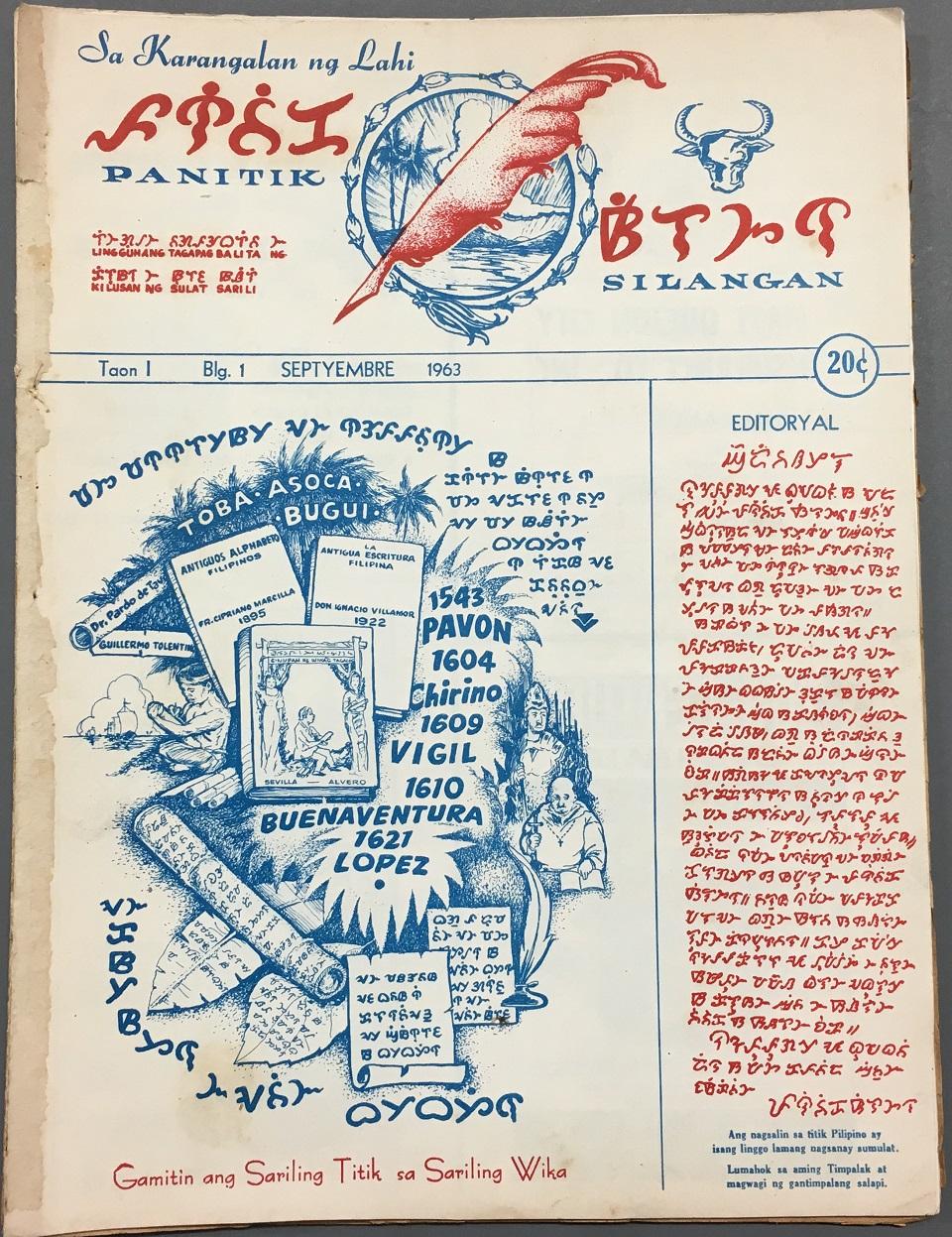Video credits: Audiopedia via YouTube.com
Hi everyone, old bitsers and new ones! Today, I am sharing to you something which is very Filipino but not all Filipinos know about it. This is really interesting yet not all might be interested with this, it is interesting for me at least. Actually, I still have another blog pending right now but I am writing this first instead because I am hyped up to talk about it as I just relearned the alphabet.
Yes, you read it right. I just relearned the Baybayin Alphabet. It is an old school Filipino Alphabet and I believe it is the first alphabet our ancestors had before the current Filipino alphabet.
Early today, my friend who is already in the United States share a photo of her keyboard where she was writing the Baybayin letters. It hit me and I realized I never really learned that by heart back in high school and college. It was indeed part of the points of learning but I only had used my short-time memory to learn this.
I then went on an downloaded the app on my Android phone so I can learn it once again now that I was not doing anything at all. By that, I was able to write the alphabet by hand again and finally able to write phrases and words using the characters. It was really amazing to be able to write again with this type of alphabet.
So today, I thought I should also introduce this to you. Hope you will find it interesting and somehow try to learn it too!

Image credits: www.bayaniart.com
What is Baybayin
In my gradeschool and highschool years, I recall my teachers touched this topic but sadly, they didn't really entice me or even my classmates at that time. It was for me a good concept but I thought it was too of no use for us since we now have the English alphabet and the Filipino as well which we can definitely use in our conversation and even in writing.
But for some reasons, I find it really interesting now that I am older. or perhaps that is because I don't have anything to do lately but anyways, I was very interested in it that it only took me less than an hour to learn to write it with the use of technology.
Image credits: www.gmanetwork.com
Before going to the application which helped me learn this, I would like to inform you on what this alphabet is. According to my research, Baybayin was the original name of the first ever alphabet of the ancient Filipinos but when the Spaniards came to the country and ruled over for more than 300 years, they had changed it to Alibata.
It comes from its keyword "baybay" which means spelling and this is originally created by Filipinos and so it is considered as our native or Ancient Philippine Writing System.
Baybayin or Alibata (known in Unicode as the Tagalog script) is a pre-Hispanic Philippine writing system that originated from the Javanese script Old Kawi. The writing system is a member of the Brahmic family (and an offshoot of the Vatteluttu alphabet) and is believed to be in use as early as the 14th century. It continued to be in use during the Spanish colonization of the Philippines up until the late 19th Century. The term baybayin literally means spelling. Closely related scripts are Hanunoo, Buhid, and Tagbanwa.
Information reference: www.shawie.com
How to Write in Baybayin?

Maharlika (the warrior class in ancient Philippines) in Baybayin. Image credits: www.pinterest.com
At a glance, it seemed that the characters are made of random shapes and art but they signify letters and phrases so it just requires a willing heart and mind to learn it.
The writing system is an abugida system using consonant-vowel combinations. Each character, written in its basic form, is a consonant ending with the vowel “A”. To produce consonants ending with the other vowel sounds, a mark is placed either above the consonant (to produce an “E” or “I” sound) or below the consonant (to produce an “O” or “U” sound). The mark is called a kudlit. The kudlit does not apply to stand-alone vowels. Vowels themselves have their own glyphs. There is only one symbol for D or R as they were allophones in most languages of the Philippines, wherein D fell in initial, final, pre-consonantal or post-consonatal positions and R in intervocalic positions.
Information reference: www.shawie.com
My friend's enthusiasm was contagious that I found myself downloading this application on my Android phone which gives tutorial on how to write in Baybayin. The application is called Learn Baybayin.
But first, I had to go through the list of available applications on the Playstore. There are lots of applications in store but then I checked the top three apps with the biggest rating and after testing multiple times, I decided I'll stick with Learn Baybayin because it is the most user friendliest interface plus there aren't any advertisements in it at all compared to the other ones I downloaded.
I ended up uninstalling the rest and proceed with the tutorial. Let me also show you how I easily learned writing it using the application:
Learning Baybayin

Baybayin enthusiasts created this. Image credits: baybayin-enthusiasts.deviantart.com
Baybayin is known in Visayan as "badlit" but I was not aware of this until I researched it today. I have to ask my parents and elders if they are aware about this but so far, I believe they aren't aware of it too. I will confirm once I get home soon.
For now, I have this application Learning Baybayin and it is very easy to start writing because the app contains four options:
LEARN
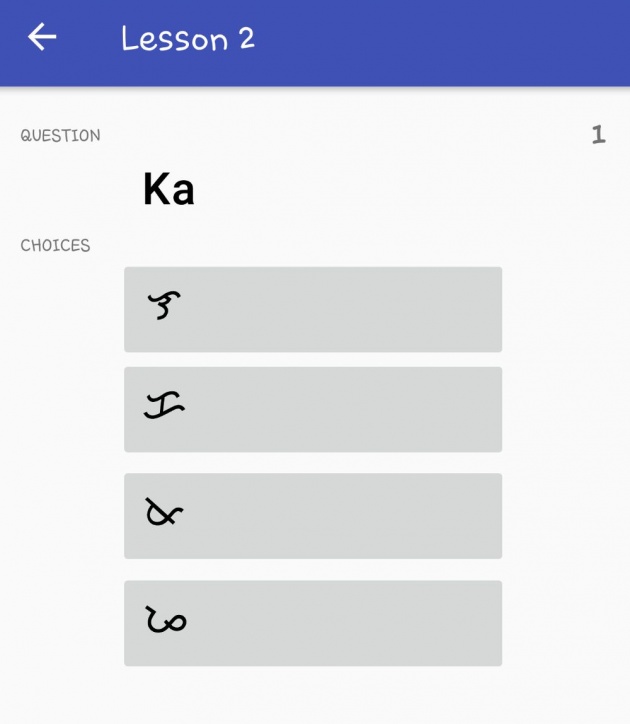
Image credits: Jean Beltran-Figues via screenshot from Android phone
There are six lessons in this section of the app. Each lesson has been created according to the complexity of the characters. It starts with single character such as the "Ba" character then as each question goes on, it becomes harder and harder.
On the first lesson, there are 18 questions, then the rest has 20. I found a bug though on this section because when I was answering the questions and each time I get a correct answer, the completed section isn't increasing. I finished the entire lessons from 1 to 6 without a single note of completion. So I believe this is still a bug!
But aside from that, I do believe as well that this shouldn't be the first in the options. I suggest that it should be the Practice that comes first before the exams. But I do also believe that the developer of the app has reasons why the Learn section comes first.
Anyway, I had to skip this one though and proceeded to the Practice option. After which I went back to Learn and completed the entire lesson.
TRANSLATE
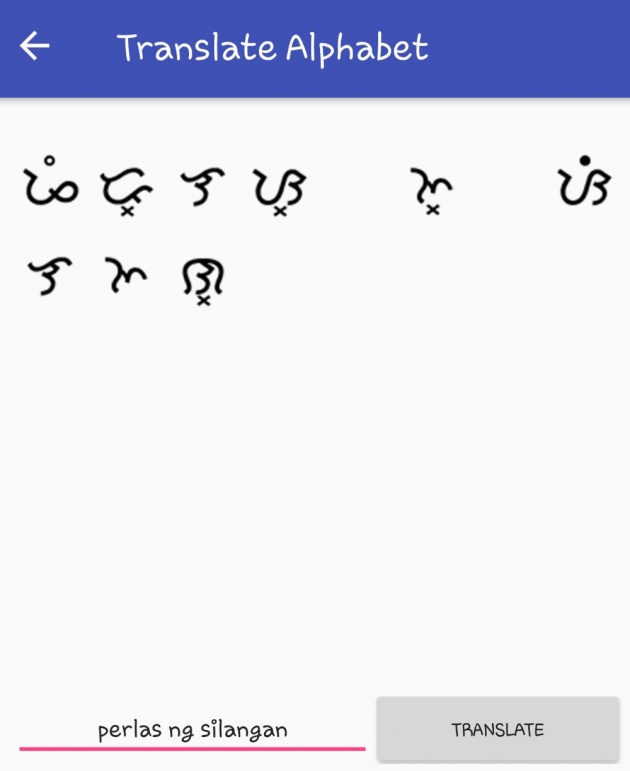
Image credits: Jean Beltran-Figues via screenshot from Android phone
This part of the app gives each user the option to convert a phrase or sentence to Baybayin or the Tagalog Alphabet according to the options:
Alphabet to Baybayin or Baybayin to Alphabet
If user selects Alphabet to Baybayin, he'll get the screen on which he or she can input a Tagalog word or a phrase then once the translate button is pressed, it will return the corresponding translation in Baybayin.
The same case happens if the other option is selected. You can input a Baybayin character then it will give the Tagalog translation.
This is very self explanatory but I have not really dived into this part. I have tried translating an english word "love" though but it was only able to translate the first two letters because the Baybayin alphabet doesn't have the letter V on it.
PRACTICE
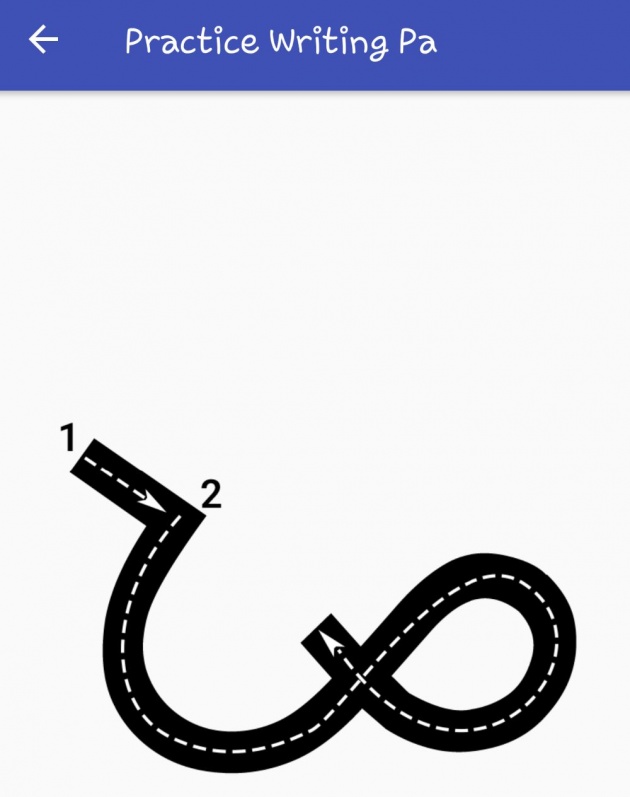
Image credits: Jean Beltran-Figues via screenshot from Android phone
The section which I dealt the most because this was the part where I really had learned to write the characters and memorize as well as understand the meaning of each single artsy character.
What I like about the characters here was that they are easy to assemble and there are also similarities to common shapes like the heart and the number 3.
The app lists down each Baybayin character, upon tapping or selecting one of the list, it will show a bigger character with dots guiding the user to which part to start and end. This made the learning curve much much easy.
I of course started with the first character up to the last. Every time I am done with one, I will be writing the rest of the learned characters or letters until I was done with all of them. This was making my brain get used to the writing and the letters. Made me really proud of myself afterwards!
BAYBAYIN
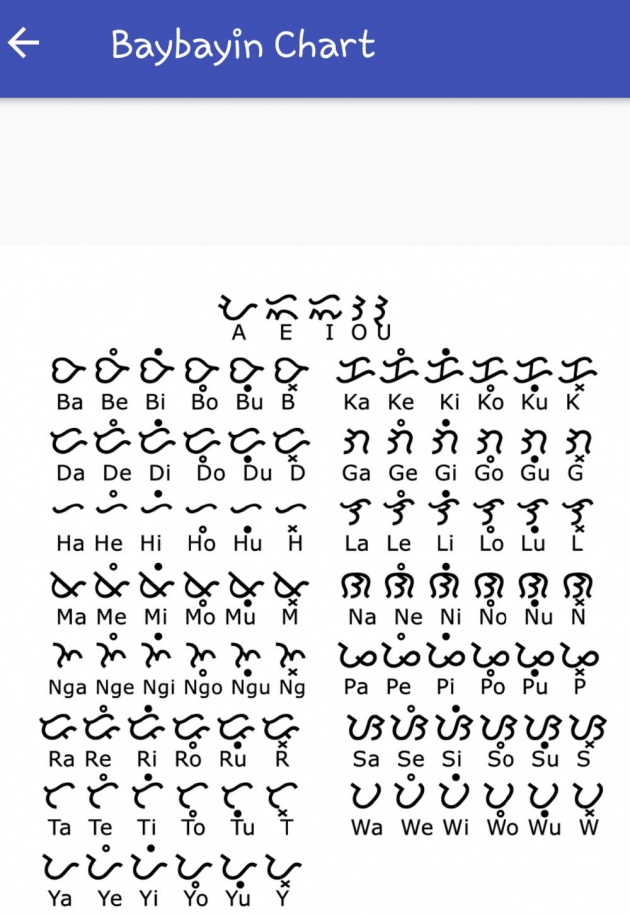
Image credits: Jean Beltran-Figues via screenshot from Android phone
The last part was the Baybayin which only entails the complete chart of Baybayin characters and this taught me that each character has to have an empty dot above it if it has the vowel E and a dot above it if it has I.
For those having the vowel O, he empty dot will be placed below the character and a filled dot if it contains U as well. The cross symbol or x is added if it doesn't contain any vowel at all. The default though has the vowel A.
Also this section contains the history of Baybayin with the water buffalo image on it or the Carabao as we refer it which signifies the Filipino.
What is Baybayin Alphabet's Significance

Image credits: craftmnl.com
You might have thought why I was learning this again after all, we already have English and Tagalog Alphabet used in schools and even in our daily lives now that we are grown ups. As a matter of fact because of technology, we have somehow left this out and had been creating our own type of characters through emojis and emoticons.
However, I tried to learn this again because it is part of being a Filipino. I do hope the Philippine educational system will also give importance to their history and to the things that are really owned by our culture and history such as this alphabet.
Video credits: TheShadowParliament via YouTube.com
This is our own, our native alphabet. It brought together our ancestors so they can communicate with each other through letters and words. I believe that it is as significant as learning our ABCs.
To end this blog, I would like to leave you with this phrase written in Baybayin:
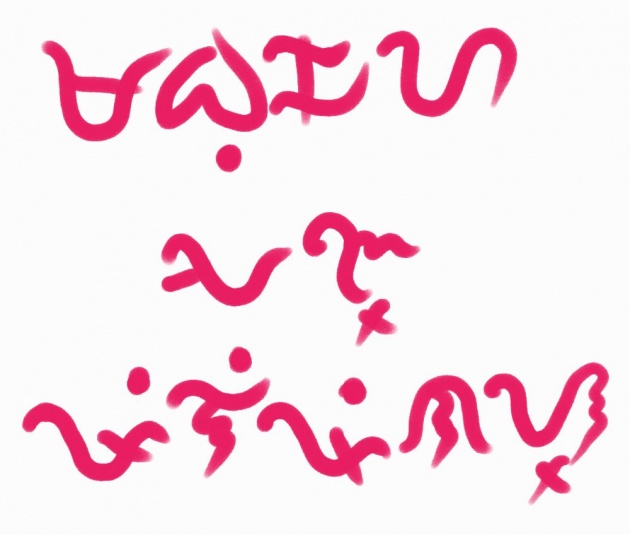
Mabuhay and Pilipinas! (long live the Philippines)
Image credits: Jean Beltran-Figues via bitLanders.com
Please don't forget to participate on the Querlo below:
Best regards,
Jean Beltran-Figues

